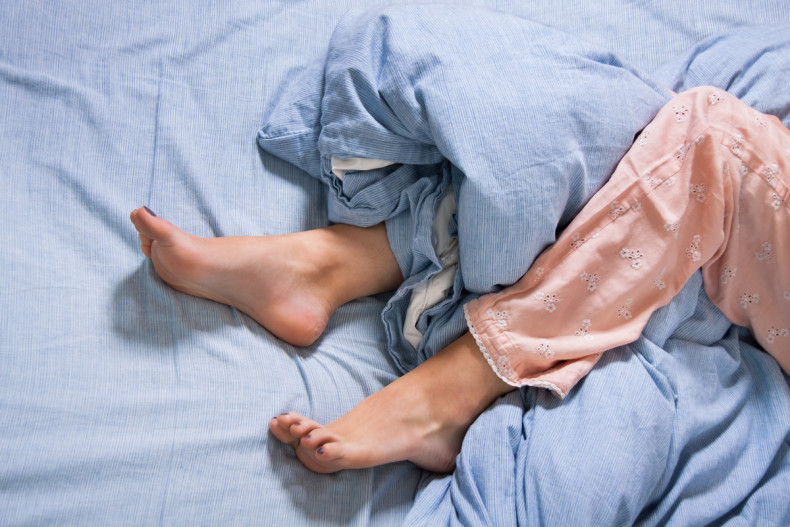Restless legs syndrome, sometimes known as irritable leg syndrome, is a common neurological sleep disorder, which is often associated with insomnia, excessive daytime sleepiness and, on some occasions, other underlying conditions.
The main symptom of the condition is an uncontrollable urge to move the legs, usually most apparent during the evening or at night, therefore affecting sleep.
If it happens during sleep, people will have abnormal limb movements, called periodic limb movements of sleep (PLMS), which may fragment their sleep.
Our sleep clinic has the expertise to diagnose and manage restless legs syndrome, PLMS, as well as other coexisting conditions, for better quality sleep and improved wellbeing.
It doesn’t just affect sleep
It is thought that restless legs syndrome affects around one in 10 people. Patients with the condition often describe a feeling of insects crawling up the legs, or a tingling, aching or burning sensation in the legs, which worsens in the evening and throughout the night. Moving the legs therefore provides relief to this uncomfortable sensation.
Despite being associated with night-time, the effects of restless legs syndrome often seep into daytime activities. “Patients often find it difficult to get to sleep or stay asleep, and the condition can prevent them from achieving a continuous period of restorative sleep,” explains Dr Shruthi Konda, consultant respiratory physician at Royal Brompton Hospital.
“As a result, patients wake up feeling unrefreshed, irritable and fatigued,” she adds.
Despite its common diagnosis, restless legs syndrome remains underdiagnosed. “Patients will often come to us and say they are not sleeping well, and sometimes it is not until we perform a sleep study that they have restless legs or periodic limb movements impacting upon their sleep,” says Dr Konda.
Coexisting conditions at interplay
Sleep is a fundamental part of human functioning and chronic sleep disturbances can have adverse effects on overall wellbeing. In fact, psychiatric disorders such as depression and anxiety are common in patients with restless legs syndrome.
Obstructive sleep apnoea (OSA) is a condition where the walls of the throat narrow and relax during sleep, causing breathing interruptions.
“Sometimes we investigate for OSA as a cause for fragmented sleep, and we find that the patient has restless legs and periodic limb movements during their sleep which interrupt their sleep. They can be unaware of this.” explains Dr Konda.
“That is why it is so important to perform a complete sleep study, which can help us identify underlying causes of sleep disturbances, so that we can treat each condition separately and effectively,” she adds.
Restless legs syndrome is also common during the last trimester of pregnancy, often disappearing after birth. While is it unclear exactly why pregnancy can trigger restless legs syndrome, “underlying health issues often become more apparent during pregnancy because the body is in a hyperdynamic state,” says Dr Konda.
‘’Iron deficiency, decreased iron availability, increased hormone levels and familial predisposition could play a role.’’
Comprehensive sleep study to provide the bigger picture
“To gain a full, personalised understanding of our patients’ sleep, we perform a sleep study. We are one of a few centres that can provide a comprehensive service,” explains Dr Konda.
We invite our patients to our sleep clinic, where we can perform a respiratory polygraphy test with special leads, which allows us to track leg movement during sleep.
Additionally, we can provide a polysomnogram with video (a test, which records brain waves, breathing, heart rate, eye and leg movements and blood oxygen levels). This test allows us to establish the frequency of movement during the night and determine how disruptive that movement is to our patient’s sleep.
Sleep disturbances are often multifactorial, and our tests can help uncover these factors, whether they be snoring, grinding your teeth, movement, outside noise or breathing interruptions. “If we identify underlying conditions at interplay, we can manage and treat them at our clinic,” explains Dr Konda.
In addition to the sleep study, clinical evidence from the patient can be helpful in establishing a diagnosis. “We ask each patient to fill in a questionnaire, which classifies symptoms from mild to severe,” adds Dr Konda.
Clinical evidence from a bed partner can be helpful, too, as they often witness the patient’s movements during their sleep. “Bed partners often describe how the patient moves their toes or feet, bends their ankle or twitches and kicks the duvet– and this description can be helpful,” says Dr Konda.
Treating restless legs syndrome at our sleep clinic
Having made sure that we have eliminated all aggravating factors, the first method of treatment involves increasing iron levels. From green, leafy vegetables to iron supplements, we try to surpass normal levels and achieve a “super normal” level of iron, which can help to raise energy levels and reduce the frequency of leg movements. For some patients, this is enough to control the disease.
If required, further treatment depends on the patient’s other coexisting conditions. We may prescribe dopamine agonists (medicines used to control Parkinson’s disease) or gabapentinoids (typically used for epilepsy or nerve pain) to help control the movements.
Who is our service for?
It’s important to note that restless legs syndrome is not exclusive to sleep. Often, the uncontrollable leg movements begin before going to bed, such as while watching TV in the evening.
We are happy to see patients with symptoms of restless legs syndrome, or any patient who experiences chronic sleep disturbances, excessive daytime sleepiness, snoring or other sleep-related symptoms.
Get in touch
For more information or to book an appointment, please contact our customer care team.
Related content
-
Sleep medicine
We have been diagnosing and treating adult sleep conditions for over 20 years at Royal Brompton and Harefield hospitals - the largest sleep service in Europe.
-
Sleep disorder clinic
Our experts treat all sleep disorders and can create tailored programmes of care to reduce symptoms and significantly improve quality of life.
